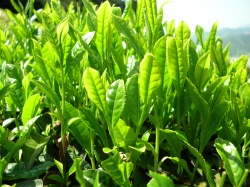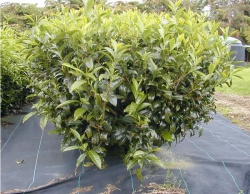Yabukita
The Yabukita cultivar was bred in 1908 by Hikosaburo Sugiyama in Shizuoka. However, it was first lodged in 1954 and registered as No.6. 1956, only two years after the registration Yabukita was determined as a variety of choice for the Shizuoka prefecture.
Initially the tea farmers switched only reluctant to the new variety but since 1999 about 95.6% of the tea farms use Yabukita. In other prefectures Yakubita is also used. In Mie are up to 84%, 77%, Fukuoka, Saitama 72%, 62%, and in Kyoto, Kagoshima 40% of all tea plants are Yabukita. Extrapolated to whole Japan these are 77% of all tea plants.
Yabukita is popular because of its high yield and the umami flavor. It is frost resistant but susceptible to fungal diseases.
The name "Yabukita" derives from the place from where the tea was grown for the first time, a bamboo bush grove (Yabu) and the north (Kita).

